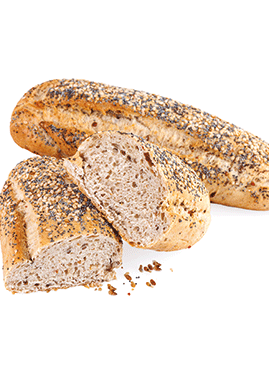
Ancient Grains
Many people are looking for a healthier alternative to heavily refined modern wheat. Ancient grains are less processed and give us more vitamins, minerals and fibre than modern forms of wheat. We find out what the experts say
“Ancient grains such as quinoa, amaranth and buckwheat represent a ‘back to the source’ approach to nutrition,” says Jason Linton of Iswari Ireland, an organic and raw superfoods company based in Kinsale, Co Cork.
“Before crops such as wheat were being sold on a mass commercial scale, they were far less modified and more complete sources of nutrients. At Iswari we take it one step further by sprouting the grains. This increases the nutrient content, and also the bioavailability of the nutrients in the grains, since the sprouting process transforms heavier starches and proteins into a more digestible form.”
“Ancient grains are easier to digest because they have never been genetically modified, and they contain a less complex form of gluten,” says Nele Callebert who works for Kamut Enterprises, producers of Khorasan, an ancient relative of wheat which originated in Mesopotamia.
“It’s easy to incorporate ancient grains into your diet. Besides flour, ancient grains are also ideal for many other products such as snacks, breakfast cereals and muesli, pasta, pizza, wheatgrass juice, etc. You can buy them in natural and organic shops, bakeries and supermarkets.”
“Spelt is an ancient wheat variety that has a different protein structure to modern wheats, which means some people find it more easy to digest,” according to Hannah Marriage, Director of Marriage’s The Master Millers. “Although not suitable for coeliacs, spelt flour is versatile and can be used in home-made breads, pizza, cakes and pancakes, producing bakes with a sweet, nutty flavour. Spelt and other ancient grain flours need more careful handling; for bread making natural leavening methods work the best as the processes are slower and more gentle.”
Here’s Rude Health’s top six ancient grains and how you can benefit from them
Amaranth
Cultivated by the Incas and Aztecs, Amaranth is a glutenand wheat-free grain with good vitamin C content. It is also a rich source of folic acid, potassium, calcium and minerals. Ideal as a form of porridge but can be added to soups and used in baking.
Buckwheat
Not a form a wheat but actually a fruit seed, buckwheat dates back to 4000BC in the Balkans. A good source of B vitamins, minerals, protein and fibre. Buckwheat is digested more slowly than other carbohydrates. Cook the seeds (groats) to make porridge and add to soups.
Khorasan
From Mesopotamia in the Middle East, Khorasan has more proteins, lipids, essential amino acids, vitamin E and minerals such as zinc, magnesium and selenium than modern wheat. It has not been genetically manipulated so its less complex gluten is easier to digest. Look out for Kamut Khorasan pure grains. Enjoy khorasan’s nutty flavour in bread, pancakes, biscuits, cake, snacks, cereals, pasta and pizza. Soak overnight before cooking.
Millet
Popular in Africa, China and India, millet is gluten-free, packed with protein and B vitamins and heart-protecting magnesium. Millet has a nutty sweet flavour and once cooked can be creamy or fluffy. Add to soups or use the flour in baking.
Quinoa
First grown over 5,000 years ago in the Andes, quinoa (pronounced ‘keen wa’) contains all nine essential amino acids and is rich in magnesium, potassium and iron as well as a good source of fibre. Once cooked serve in salads or added to soups.
Spelt
Grown in Iran in 5000BC, spelt contains gluten although it is easier to digest than modern wheat so may be easier on the stomach for some people. It is high in protein and fibre as well as protein, magnesium and selenium. Use spelt flour in bread and buy spelt versions of cereals, pasta and crackers.
Click here to read other Rude Food articles.
Click here to return to the Rude Health Magazine homepage.